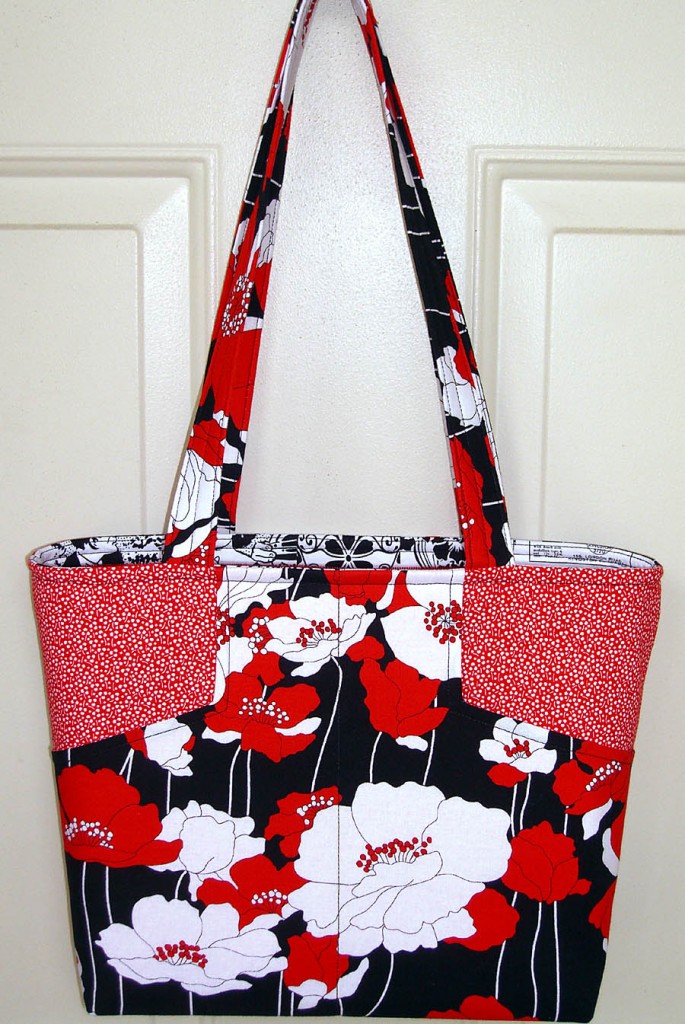The Margo Handbag pattern is designed to use four coordinating fabrics. I found two fabrics that I like together, and I "don't wants no more."
Besides, when I bought my last two purses, I was told they were made with light-toned interior fabric so the contents could be readily seen, like this:
Here is the main fabric:
Here is the contrast fabric:
First, I steam pressed the contrast fabric and laid it out on the table:
After cutting one end of the fabric straight, I placed pattern pieces on the fabric to check the layout. Here are the pieces for the front and back, front and back pockets, and insert sleeve:
The length of the big pieces is 15 inches, The small pieces are 4-3/4" by 11-1/2 inches.
I started by cutting across the fabric at the 12-inch mark for the front and back pieces. Then I cut across the fabric at the 24-inch mark for the front and back pocket lining pieces.
Tip:
The 24-inch mark is closer to the left side of the cutting table. I want to cut from that side, so the edge of the ruler used with the rotary cutter is on the right side. I stand at the end of the table by the numbers, I place the far end of the cutting edge of the ruler on the same line as the bottle cap. Then I lay the ruler down with the near end of the cutting edge at the number 24:
Back to our regular program:
I cut off the selvage, made two cross cuts 15 inches apart, and made one more cross cut 11-1/2 inches away. The last piece I cut into two strips 4-3/4" wide:
The long cuts are 14 inches from the right side, then 10 inches from the first cut. The cross cuts are 17 inches apart:
All the fabric pieces are paired with their pattern pieces, and are off the table.
The next step is to make the front and back pockets, and maybe more.


-001.jpg)
-001.jpg)
.jpg)
.jpg)
-001.jpg)
-001.jpg)
.jpg)

.jpg)
.jpg)
.jpg)



.jpg)
.jpg)

.jpg)
























